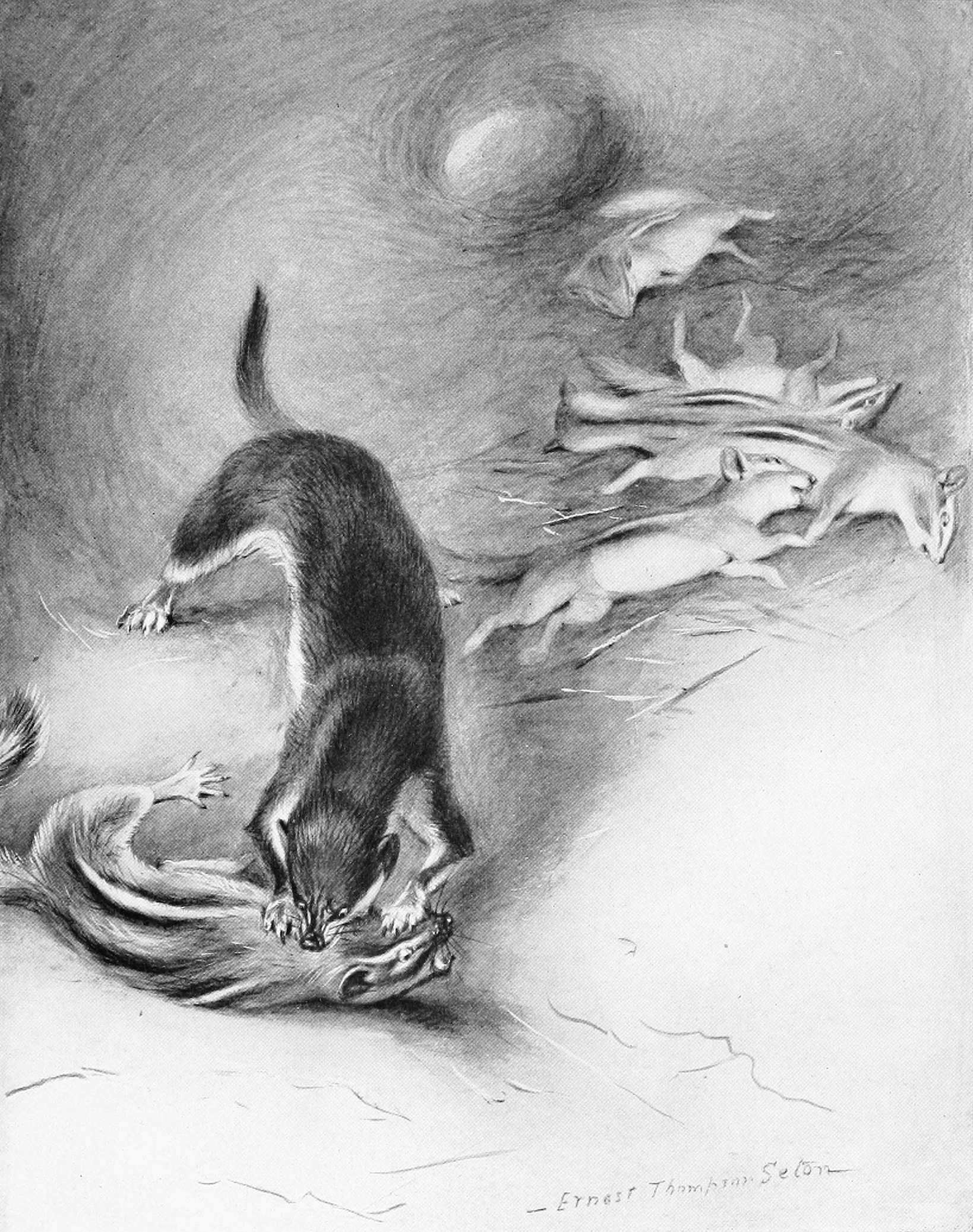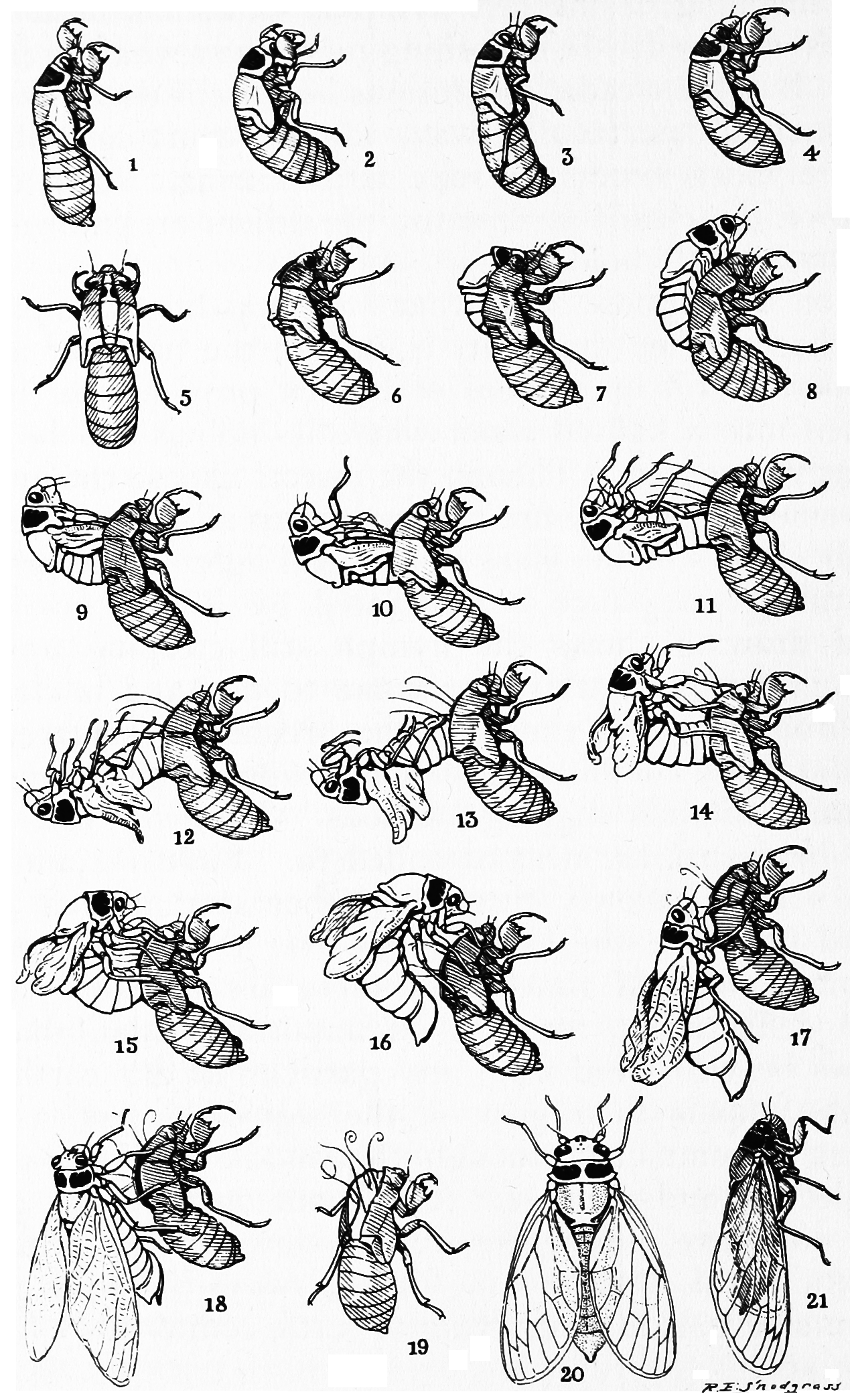|
Predator Satiation
Predator satiation (less commonly called predator saturation) is an anti-predator adaptation in which prey briefly occur at high population density, population densities, reducing the probability of an individual organism being eaten. When predation, predators are flooded with potential prey, they can consume only a certain amount, so by occurring at high densities prey benefit from a safety in numbers effect. This strategy has evolved in a diverse range of prey, including notably many species of plants, insects, and fish. Predator satiation can be considered a type of refuge from predators. As available food increases, a predator has more chances of survival, growth, and reproduction. However, as food supply begins to overwhelm the predator's ability to consume and process it, consumption levels off. This pattern is evident in the functional response of type II. There are also limits to population growth (numerical response), dependent on the generation time of the predator specie ... [...More Info...] [...Related Items...] OR: [Wikipedia] [Google] [Baidu] |
Larva
A larva (; plural larvae ) is a distinct juvenile form many animals undergo before metamorphosis into adults. Animals with indirect development such as insects, amphibians, or cnidarians typically have a larval phase of their life cycle. The larva's appearance is generally very different from the adult form (''e.g.'' caterpillars and butterflies) including different unique structures and organs that do not occur in the adult form. Their diet may also be considerably different. Larvae are frequently adapted to different environments than adults. For example, some larvae such as tadpoles live almost exclusively in aquatic environments, but can live outside water as adult frogs. By living in a distinct environment, larvae may be given shelter from predators and reduce competition for resources with the adult population. Animals in the larval stage will consume food to fuel their transition into the adult form. In some organisms like polychaetes and barnacles, adults are ... [...More Info...] [...Related Items...] OR: [Wikipedia] [Google] [Baidu] |
Swarm Behaviour
Swarm behaviour, or swarming, is a collective animal behaviour, collective behaviour exhibited by entities, particularly animals, of similar size which aggregate together, perhaps milling about the same spot or perhaps moving ''en masse'' or animal migration, migrating in some direction. It is a highly interdisciplinary topic. As a term, ''swarming'' is applied particularly to insects, but can also be applied to any other entity or animal that exhibits swarm behaviour. The term ''flocking (behavior), flocking'' or ''murmuration'' can refer specifically to swarm behaviour in birds, ''herd behaviour, herding'' to refer to swarm behaviour in tetrapods, and shoaling and schooling, ''shoaling'' or ''schooling'' to refer to swarm behaviour in fish. Phytoplankton also gather in huge swarms called algal bloom, ''blooms'', although these organisms are algae and are not self-propelled the way animals are. By extension, the term "swarm" is applied also to inanimate entities which exhibit p ... [...More Info...] [...Related Items...] OR: [Wikipedia] [Google] [Baidu] |
Surplus Killing
Surplus killing, also known as excessive killing, killing for sport, henhouse syndrome, or overkill, is a common behavior exhibited by predators, in which they kill more prey than they can immediately eat and then they either cache or abandon the remainder. The term was invented by Dutch biologist Hans Kruuk after studying spotted hyenas in Africa and red foxes in England. Some of the other animals which have been observed engaging in surplus killing include orcas, zooplankton, humans, damselfly naiads, predaceous mites , martens, weasels, honey badgers, jaguar , leopards, lions, wolves, spiders, brown bears, American black bears, polar bears, coyotes, lynxes, minks, raccoons and dogs. Examples In Tasmania, in a single dog attack, 58 little penguins were killed. In mainland Australia, a single fox once killed around 74 penguins over several days, eating almost nothing. One leopard in Cape Province, South Africa killed 51 sheep and lambs in a single incident. Similarly, two ca ... [...More Info...] [...Related Items...] OR: [Wikipedia] [Google] [Baidu] |
Semelparity
Semelparity and iteroparity are two contrasting reproductive strategies available to living organisms. A species is considered semelparous if it is characterized by a single reproductive episode before death, and iteroparous if it is characterized by multiple reproductive cycles over the course of its lifetime. Iteroparity can be further divided into continuous iteroparity (primates including humans and chimpanzees) and seasonal iteroparity (birds, dogs, etc.) Some botanists use the parallel terms monocarpy and polycarpy. (See also plietesials.) In truly semelparous species, death after reproduction is part of an overall strategy that includes putting all available resources into maximizing reproduction, at the expense of future life (see § Trade-offs). In any iteroparous population there will be some individuals who die between their first and second reproductive episodes, but unless this is part of a syndrome of programmed death after reproduction, this would not be called ... [...More Info...] [...Related Items...] OR: [Wikipedia] [Google] [Baidu] |
Selfish Herd Theory
The selfish herd theory states that individuals within a population attempt to reduce their predation risk by putting other conspecifics between themselves and predators. A key element in the theory is the domain of danger, the area of ground in which every point is nearer to a particular individual than to any other individual. Such antipredator behavior inevitably results in aggregations. The theory was proposed by W. D. Hamilton in 1971 to explain the gregarious behavior of a variety of animals. It contrasted the popular hypothesis that evolution of such social behavior was based on mutual benefits to the population. The basic principle governing selfish herd theory is that in aggregations, predation risk is greatest on the periphery and decreases toward the center. More dominant animals within the population are proposed to obtain low-risk central positions, whereas subordinate animals are forced into higher risk positions. The hypothesis has been used to explain why popula ... [...More Info...] [...Related Items...] OR: [Wikipedia] [Google] [Baidu] |
Reproductive Synchrony
''Reproductive synchrony'' is a term used in evolutionary biology and behavioral ecology. Reproductive synchrony—sometimes termed "ovulatory synchrony"—may manifest itself as "breeding seasonality". Where females undergo regular menstruation, " menstrual synchrony" is another possible term. Reproduction is said to be synchronised when fertile matings across a population are temporarily clustered, resulting in multiple conceptions (and consequent births) within a restricted time window. In marine and other aquatic contexts, the phenomenon may be referred to as mass spawning. Mass spawning has been observed and recorded in a large number of phyla, including in coral communities within the Great Barrier Reef. In primates, reproductive synchrony usually takes the form of conception and birth seasonality. The regulatory "clock", in this case, is the sun's position in relation to the tilt of the earth. In nocturnal or partly nocturnal primates—for example, owl monkeys—the peri ... [...More Info...] [...Related Items...] OR: [Wikipedia] [Google] [Baidu] |
Frugivore
A frugivore is an animal that thrives mostly on raw fruits or succulent fruit-like produce of plants such as roots, shoots, nuts and seeds. Approximately 20% of mammalian herbivores eat fruit. Frugivores are highly dependent on the abundance and nutritional composition of fruits. Frugivores can benefit or hinder fruit-producing plants by either dispersing or destroying their seeds through digestion. When both the fruit-producing plant and the frugivore benefit by fruit-eating behavior the interaction is a form of mutualism. Frugivore seed dispersal Seed dispersal is important for plants because it allows their progeny to move away from their parents over time. The advantages of seed dispersal may have led to the evolution of fleshy fruits, which entice animals to consume them and move the plant's seeds from place to place. While many fruit-producing plant species would not disperse far without frugivores, their seeds can usually germinate even if they fall to the ground directl ... [...More Info...] [...Related Items...] OR: [Wikipedia] [Google] [Baidu] |
Mutualism (biology)
Mutualism describes the ecological interaction between two or more species where each species has a net benefit. Mutualism is a common type of ecological interaction. Prominent examples include most vascular plants engaged in mutualistic interactions with mycorrhizae, flowering plants being pollinated by animals, vascular plants being dispersed by animals, and corals with zooxanthellae, among many others. Mutualism can be contrasted with interspecific competition, in which each species experiences ''reduced'' fitness, and exploitation, or parasitism, in which one species benefits at the expense of the other. The term ''mutualism'' was introduced by Pierre-Joseph van Beneden in his 1876 book ''Animal Parasites and Messmates'' to mean "mutual aid among species". Mutualism is often conflated with two other types of ecological phenomena: cooperation and symbiosis. Cooperation most commonly refers to increases in fitness through within-species (intraspecific) interactions, alth ... [...More Info...] [...Related Items...] OR: [Wikipedia] [Google] [Baidu] |
Periodical Cicada
The term periodical cicada is commonly used to refer to any of the seven species of the genus ''Magicicada'' of eastern North America, the 13- and 17-year cicadas. They are called periodical because nearly all individuals in a local population are developmentally synchronized and emerge in the same year. Although they are sometimes called "locusts", this is a misnomer, as cicadas belong to the taxonomic order Hemiptera (true bugs), suborder Auchenorrhyncha, while locusts are grasshoppers belonging to the order Orthoptera. ''Magicicada'' belongs to the cicada tribe Lamotialnini, a group of genera with representatives in Australia, Africa, and Asia, as well as the Americas. ''Magicicada'' species spend around 99.5% of their long lives underground in an immature state called a nymph. While underground the nymphs feed on xylem fluids from the roots of deciduous forest trees in the eastern United States. In the spring of their 13th or 17th year mature cicada nymphs emerge between late ... [...More Info...] [...Related Items...] OR: [Wikipedia] [Google] [Baidu] |
Anti-predator Adaptation
Anti-predator adaptations are mechanisms developed through evolution that assist prey organisms in their constant struggle against predators. Throughout the animal kingdom, adaptations have evolved for every stage of this struggle, namely by avoiding detection, warding off attack, fighting back, or escaping when caught. The first line of defence consists in avoiding detection, through mechanisms such as camouflage, masquerade, apostatic selection, living underground, or nocturnality. Alternatively, prey animals may ward off attack, whether by advertising the presence of strong defences in aposematism, by mimicking animals which do possess such defences, by startling the attacker, by signalling to the predator that pursuit is not worthwhile, by distraction, by using defensive structures such as spines, and by living in a group. Members of groups are at reduced risk of predation, despite the increased conspicuousness of a group, through improved vigilance, predator confusio ... [...More Info...] [...Related Items...] OR: [Wikipedia] [Google] [Baidu] |
Bamboo
Bamboos are a diverse group of evergreen perennial flowering plants making up the subfamily Bambusoideae of the grass family Poaceae. Giant bamboos are the largest members of the grass family. The origin of the word "bamboo" is uncertain, but it probably comes from the Dutch or Portuguese language, which originally borrowed it from Malay or Kannada. In bamboo, as in other grasses, the internodal regions of the stem are usually hollow and the vascular bundles in the cross-section are scattered throughout the stem instead of in a cylindrical arrangement. The dicotyledonous woody xylem is also absent. The absence of secondary growth wood causes the stems of monocots, including the palms and large bamboos, to be columnar rather than tapering. Bamboos include some of the fastest-growing plants in the world, due to a unique rhizome-dependent system. Certain species of bamboo can grow within a 24-hour period, at a rate of almost an hour (equivalent to 1 mm every 90 ... [...More Info...] [...Related Items...] OR: [Wikipedia] [Google] [Baidu] |








